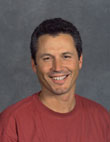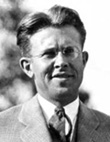|
| Today
Noon
Employee Activities Assoc.
Yoga Class with Naomi Hartwig ($10/$12)
Bldg. 70A-3377
2 p.m.
Nanoscale Science & Engineering
Nanophotonic Crescent Moons for Molec`ular/Cellular Imaging
Luke Lee
390 Hearst Mining Bldg.
4 p.m.
Life Sciences
A Conserved Meiotic Checkpoint Monitors Synapses
Needhi Bhalla
Bldg. 66 Auditorium
4 p.m.
Life Sciences
Simulating Biochemical Reaction Networks
Steven Andrews
Bldg. 66 Auditorium
Monday
Noon
Workforce Diversity Office
Black History Month
Kamala Harris, SF District Attorney
Bldg. 50 Auditorium
4:30 p.m.
Physics Department
Neutron-Detected Tomography of Impurity-Seeded Superfluid
Helium
Mike Hayden, Simon Fraser U.
1 Le Conte Hall
|
|
|
 |
|
|
Morning Editions: Chorizo & Eggs with Tortillas
Market Carvery: Lemon Pepper Hoki Filet with Rice & Veggies
The Fresh Grille: Fish Sandwich with Cole Slaw & Fries
Menutainment: Chicken or Pork Burrito
|
B'fast: |
6:30
a.m. - 9:30 a.m. |
| Lunch: |
11
a.m. - 1:30 p.m. |
Full
menu
 |
|
|
|
 |
|
 |

Saving PC Energy:
It's Simple as Sleep
By
Ian Austen
|
|
|
|
 |
 |
|
|
Nordman |
|
|
|
As part of their research into making electronic products more efficient, Bruce Nordman and other energy-use analysts in Berkeley Lab's Environmental Energy Technologies Division prowl around late at night studying the secret life of office machines. Among the printers and photocopiers, things are not very lively. About three-quarters of these machines automatically slip into power-saving mode after their users leave for the day. Computers, however, tend to be the office bon vivants. In a typical office, Nordman said, about two-thirds of the computers hum the night away, drawing full power. Full story (registration required).

Book About Accelerators Includes E.O. Lawrence
|
|
|
|
 |
 |
|
|
Lawrence |
|
|
|
An account of nuclear physics 75 years ago, "The Fly in the Cathedral: How a Group of Cambridge Scientists Won the International Race to Split the Atom," by British journalist Brian Cathcart, includes the story of Ernest Lawrence's cyclotron invention. The 1909 revelation that the atom "is like a fly in the cathedral" launched an international contest to dissect things further. In reflects upon the young Lawrence at UC Berkeley experimenting with a circular accelerator, competing with other American and German teams to be the first to split the atom. Read the New York Review of Books review here.

|
 |
|

|
|
 |
Library's Journal
Funding Restored
The
results of the recent Library Journal Survey, completed
by 1,330 employees, have helped spur the restoration
of $580,000 to the Library's journal budget. This decision
by Director Chu will allow the renewal
of subscriptions to Elsevier and other journals and
the addition of new subscriptions. The Berkeley Lab
Library Committe (LLC) will determine the additions
in consultation with the Information Technologies and
Services Division (ITSD) and the Computing and Communications
Services Advisory Committee (CSAC). Researchers can
offer preferences or concerns to their LLC
division representative.
Ethanol Fueling Station
Down for Maintenance
Due to required maintenance of the ethanol fueling system located at Building 76, ethanol fuel (E85) will not be available for dispensing throughout February. Divisions that have a "flex-fuel" vehicle can use their assigned fuel card to dispense unleaded fuel at the pump. Those who experience difficulty in refueling their vehicle can stop by the Fleet Office (Building 76-115) for assistance. A notice will appear in Today at Berkeley Lab when maintenance is completed. For more information, contact Don Prestella (x4224) or Fleet Operations (x5475).

|
 |
|
 |
|
 |
|
Biowarfare
sensing element can detect a single molecule of
sarin. |
Postdoc's Work Leads
To Bio Sensing Device
Based on a dissertation by Choongho Yu, currently a postdoctoral fellow in Berkeley Lab's Materials Sciences Division, a research group led by an engineer at the University of Texas at Austin has developed a sensing device tailored for mass production of highly sensitive and stable nerve-gas detectors. The new sensor technology, which is more sensitive and much more stable than its predecessors, was featured on this week's cover of Applied Physics Letters. The researchers' highlighted study — of which Yu was the lead author — demonstrated the sensor's potential ability to detect a single molecule of the nerve gas, sarin, the most toxic of biological warfare agents. Full story.

|
 |
| |
 |
|
|

